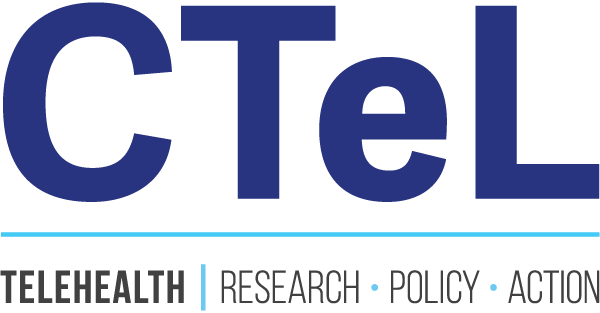
Fact Sheets and Resources
-
Telehealth Contingency Planning
-

CY26 Physician Fee Schedule Overview
-

Blockchain for Health Data: Risks, Benefits, and Policy Considerations
Blockchain isn’t just for cryptocurrency—it’s also a powerful tool for healthcare. This is where we are likely to see blockchain be integrated into healthcare:
Download this factsheet to dive deeper into how blockchain and digital health can be combined for increase patient security.
-

HHS 2026 Budget Overview
CTeL ANALYSIS: Key Takeaways for Telehealth Innovators in the HHS FY2026 Budget
The HHS FY2026 Budget in Brief is out, and it signals a clear focus on integrating technology into chronic care and prevention. Our policy experts have analyzed the budget to highlight what matters most to the telehealth, virtual care, and digital health community.
-

Health AI Playbook Exec Summary
Executive Summary for CTeL’s Health AI Playbook
-

The Growing Nursing Shortage: A Call for National Recognition as a Public Health Emergency
The U.S. healthcare system is facing a rapidly escalating nursing shortage that jeopardizes patient care, strains existing healthcare professionals, and necessitates immediate national action. We urge the Administration to declare the nursing shortage a public health emergency to unlock critical resources and implement effective solutions.
-

The First 100 Days: An Analysis of the Trump Administration's Impact on Digital Health
The initial 100 days of the Trump administration have ushered in a period of significant policy shifts with notable ramifications for the digital health sector. A strong emphasis on deregulation, particularly in the realm of artificial intelligence (AI), has been a hallmark of this early period. While this approach presents potential avenues for accelerated innovation in digital health technologies, it also introduces uncertainty regarding oversight and safeguards. The administration's focus extends to addressing chronic disease through the "Make America Healthy Again" commission, which could indirectly influence the trajectory of digital health solutions aimed at promoting healthier lifestyles. In contrast, actions such as the repeal of the "Richardson Waiver" and workforce reductions at the Department of Health and Human Services (HHS) raise concerns about transparency and the capacity of the government to effectively support and regulate the digital health landscape. The extension of telehealth flexibilities provides a degree of stability in the short term, yet the long-term policy framework for virtual care remains a key area of concern. Furthermore, increased scrutiny of remote patient monitoring programs through audits signals a focus on ensuring compliance and preventing misuse within this growing segment of digital health. The digital health community, as represented by organizations like the Center for Telehealth & e-Health Law (CTeL), continues to play a vital role in advocating for policies that foster innovation while ensuring patient safety and equitable access.
-

Data Security Final Rule
Preventing Access to U.S. Sensitive Personal Data and Government-Related Data by Countries of Concern or Covered Persons
-

Telehealth Contingency Planning & Communications Strategy
Telehealth has become an essential component of modern healthcare, increasing access, improving outcomes, and reducing barriers to care. However, with the upcoming expiration of Medicare telehealth flexibilities on March 31, 2025, healthcare organizations must prepare for potential disruptions. CTeL has provided a comprehensive framework for contingency planning and communication strategies to minimize patient care disruptions and financial impacts.
-

Impending Expiration of Medicare Telehealth Flexibilities and Potential Government Shutdown
The federal government is currently funded by a Continuing Resolution (CR) set to expire on March 14, 2025. This CR also extended certain Medicare telehealth flexibilities through March 31, 2025. If Congress does not pass an extension before this date, Medicare telehealth reimbursement policies will revert to pre-pandemic standards, drastically limiting virtual care options for millions of patients.
-

Harnessing Innovation for Heart Health
White Paper:
Every 33 seconds, someone in the United States dies from heart disease (American Heart Association [AHA], 2019). Despite advancements in medical technology, the silent progression of cardiovascular diseases often leads to late-stage diagnoses and preventable deaths. Early detection and remote monitoring have emerged as crucial solutions to this crisis, offering a proactive approach to cardiac care.
-

DEA Prescribing Rules Primers
-

HDHP Expiration Fact Sheet
With the waivers expired, advocates and industry leaders are calling on Congress to act. Proposals like the Telehealth Extension and Evaluation Act aim to reinstate the safe harbor, but progress remains uncertain.
In the meantime, employers and healthcare providers are exploring ways to bridge the gap. Some employers are offering subsidies for telehealth visits, while providers are experimenting with subscription-based pricing models to make virtual care more accessible.
-

Telehealth Trends and Impacts Infographic
-

Information Blocking
Information blocking occurs when an actor, such as a healthcare provider, health IT developer, health information exchange (HIE)/health information network (HIN), or health plan, engages in a practice that is likely to interfere with the access, exchange, or use of electronic health information except as required by law.
-

Chronic Care Management
-

Telehealth Modernization Act Roadmap
An outline of the steps still to be taken to pass the Telehealth Modernization Act by December 31, 2024
-

Remote Patient Monitoring Fact Sheet
-

Centering Digital Equity to Advance Reproductive Telehealth Care Access
A collaborative resource with RHITES: Telehealth can help overcome the geographical, financial, and logistical barriers that many people face when trying to access sexual and reproductive health (SRH) care in person.
-

Mental Health Parity
-

Summary of CY 2025 CMS PFS Comments
CTeL responds to the recently released CMS physician fee schedule for CY 2025.
-

PHE Waivers

